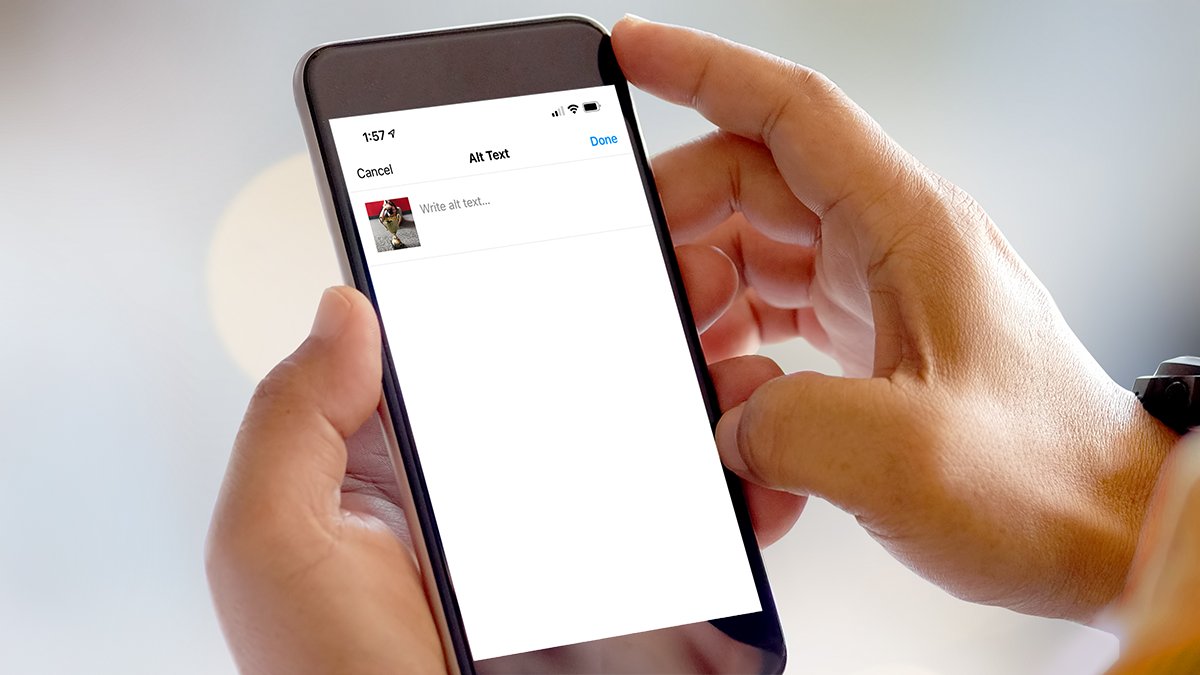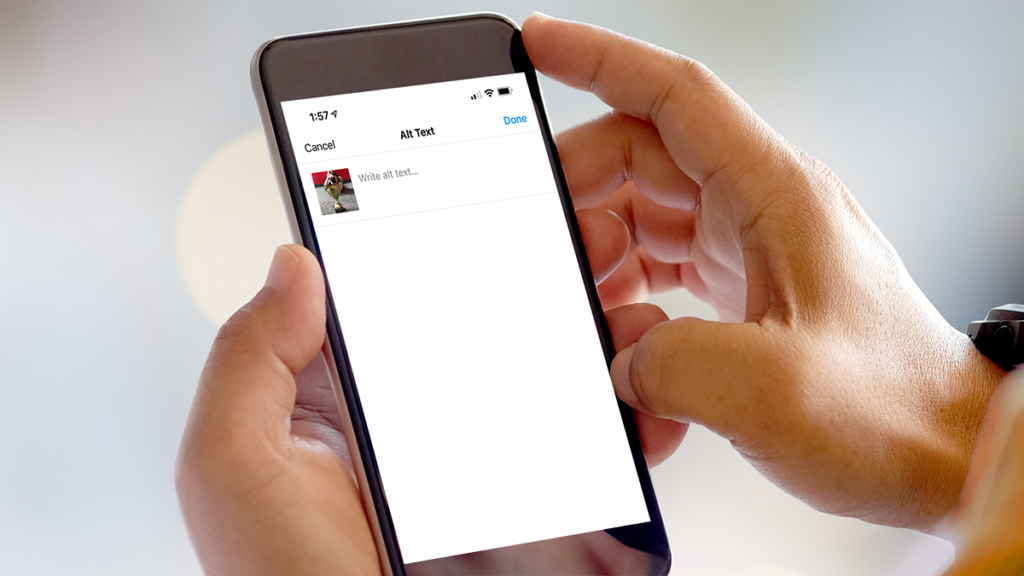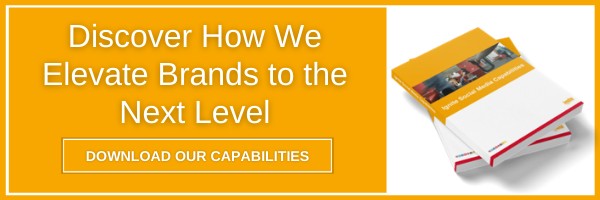
04 May Accessibility on Social Media; Tips for Ensuring Your Social Content is Accessible
Quick question – is your social media team taking the necessary steps to ensure your social content is accessible to all audiences, including those with sensory disabilities?
Today, there are 466 million persons in the world with disabling hearing loss and 2.2 billion people that have a vision impairment or experience blindness. If your social teams aren’t taking the extra steps to create an accessible experience for everyone on social media, you’re excluding billions of people from being able to experience your content.
While there are laws and infrastructures in place that require brands and retailers to ensure digital experiences are accessible to all, it boils down to a more important factor – caring about your audience.
Our team at Ignite Social Media recently met with Alexa Heinrich, Social Media Manager for St. Petersburg College and Expert on Digital Accessibility, who helped educate our teams on various ways to ensure social media content is accessible to all. Below, we’re sharing these tips with you today to help spread the importance of accessible social media content.

Tips for Developing Accessible Social Media Content
Accessible Copywriting Tips
Hashtags
Depending on how old you are, the # symbol means something different to everyone. That said, it’s now universally associated with social media hashtags, which are used on the majority of major social networks. However, most people aren’t using compound hashtags in an accessible manner. To ensure your compound hashtags are accessible, use the title case method (also known as camel case), capitalizing the first letter in each word of your hashtag.
Example:
- Instead of this: #socialmediaagency
- Do this: #SocialMediaAgency
By capitalizing your hashtags, screen readers can more easily read the different words and it’s just easier for the general audience to read altogether.
BONUS – You can also apply title case to your Twitter handle to make it more accessible.
Plain Language
Writing in plain language is a best practice you should already be using in social media (considering character limits and cutoffs), but this tactic helps audiences understand content more quickly and assists those readers who may have a cognitive disability. The Plain Writing Act, established in 2010, states eight essential guidelines for writing plain language. Here are five that most importantly apply to social media copywriting.
- Write for your audience
- Organize your information
- Choose your words carefully
- Be clear and concise
- Keep it conversational
Accessible Emoji & Icon Usage Tips
Emojis
Each individual emoji icon has a unique description associated with it, which a screen reader will use to read the emoji aloud to the user. Here are a few insights about emoji descriptions and why you need to thoroughly research which emojis you plan to utilize with your copy.
- Some emojis are very specific and thus their description is specific (for example, there are 8 different tree emojis) so use the one thats description most closely relates to your message/intent.
- Some emoji descriptions vary depending on the device you’re using so make sure you know all the possible translations before implementing.
- Emojis with skin tones get custom descriptions and there are five different descriptions available. If you don’t want a specific skin tone associated with your emoji, use the yellow version.
- If utilizing the same emoji multiple times in a row, screen readers will truncate the interpretation instead of listing the description multiple times.
- For example, if your copy includes “❤️❤️❤️” a screen reader will say “Three Red Hearts” instead of “Red Heart, Red Heart, Red Heart”.)
- Place emojis at the end of your content for easier translation from screen readers versus using an emoji to substitute a word (since the description of the emoji you’re using might not directly match the word you’re substituting).
Set yourself up for success by using a resource such as Emojipedia to ensure you’re properly utilizing emojis.
Unicode Characters
Related to emoji and icon usage is the usage of Unicode characters. Primarily used by influencers, but some brands as well, users are utilizing external websites to change the font and formatting of their text (captions) on social media. While this may look visually pleasing to some, most screen readers cannot interpret the code and will skip over the copy or will awkwardly interpret the code into gibberish that the user isn’t able to understand. Because of this, it’s best to use the default text for your social media copy needs.
ASCII Art
Finally, ASCII art is another popular trend on social media where you utilize various characters to create an image in your social post. This tactic isn’t accessible to screen readers and when read aloud will translate the individual characters. Also, similar to emojis, ASCII art can appear differently on different devices. This is another tactic that we recommend brands avoid using to keep their content accessible.
Accessible Image Tips
Alt Text
Images are a huge part of social media and including alt text on your images is the best way to ensure they’re accessible to all. Some platforms will auto-generate alt text for your images, but Facebook, Instagram, LinkedIn, and Twitter all allow you to manually input alt text (which is preferred).
When writing your alt text copy, it’s important to leverage plain language as we previously discussed, and exclude using words such as “picture of” or “image of” (the screen reader will likely already say this, unless you’re publishing a screenshot or infographic for example). Additionally, if you’re going to include copy within your visual, make sure that copy is included in your alt text, otherwise, the screen reader will not be able to translate the flattened text within the image.
BONUS – Alt text can help improve your SEO, so include keywords when necessary.
Accessible Video Tips
Audio Descriptions
While most videos today utilize captions, which capture and display what’s being said within the video, audio descriptions are underutilized. An audio description is a form of narration used to provide information surrounding key visual elements in videos, aka narrating what’s happening when someone isn’t speaking. Having an audio description included in your content adds an additional audio track that users may toggle on or off at their leisure depending on the platform.
Unfortunately, and surprisingly, audio descriptions are not supported by YouTube or Vimeo, two of the most popular channels for video content. As a workaround, you can upload two versions of your video, one with an audio description and one without. Alternatively (and a more time-sensitive method) you could also write a thorough written description of your video in the caption area.
Video Captions
Circling back to video captions, which are more commonly used today, you have the option to leverage closed captions (a user can toggle captions on or off) or open captions (captions are burned onto a video). Either method is effective. Additionally, many platforms allow you to upload custom .SRT files with for captions, but both YouTube and Vimeo have tools that can auto-generate captions for you. That said always review your captions as it’s unlikely that any auto-translation feature is 100% accurate.
BONUS – You can download the .SRT file from YouTube for free and use it to create captions on other platforms.
Stories Captions
Open captions on Stories content is also very popular today, and while Instagram has been slowly rolling out an auto-caption sticker for Stories this year, you can also leverage tools such as MixCaptions, Clipomatic, AutoCap, and Kapwing for other stories formats on additional channels.
Live Video Captions
Finally, live videos should also include a captioned component. To accomplish this, you could consider using a video service (such as Zoom or Google Meet) that has a live-captioning feature built-in, hire an on-camera interpreter, or be prepared to provide a full video transcript immediately at the conclusion of your event.
There’s certainly a lot to consider when it comes to developing accessible social media content, so feel free to download this accessibility checklist created by Alexa Heinrich.
One Final Tip Before You Go – If you don’t already have dummy accounts for testing your social media content, set those up! These are extremely helpful when it comes to testing out accessibility features and making sure your content’s displaying and being interpreted properly.
For any additional questions or help with your social media marketing, contact our team today. Alternatively, feel free to subscribe to our bi-weekly e-newsletter to keep up with the latest and greatest in the social media industry.
Subscribe to Social You Should Know









